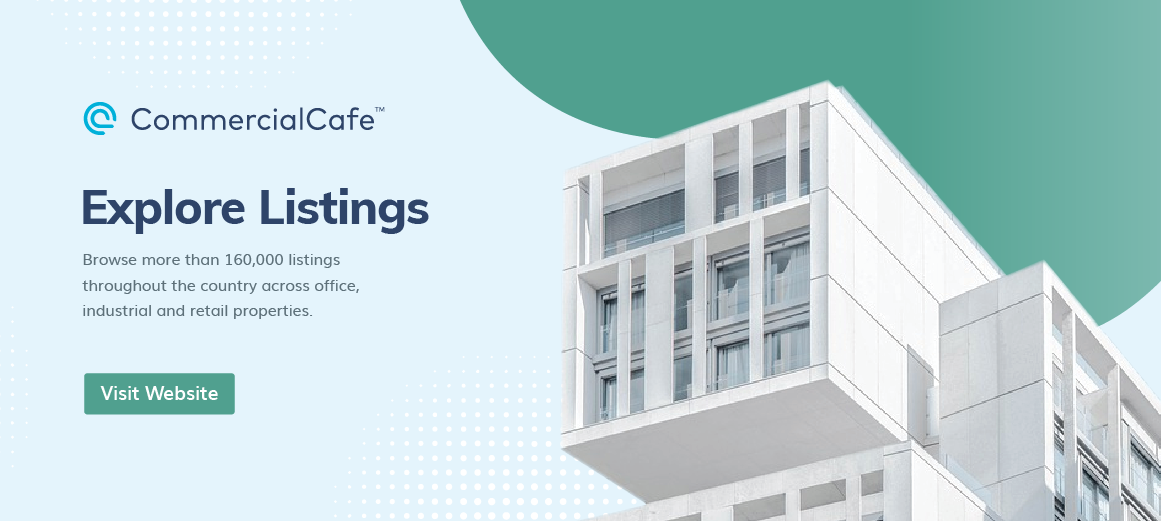Whether you’re a startup looking for your first office space, or an established business fishing for a better deal, renting an office space in a vibrant city like Austin takes time, an experienced broker on your side and – as with all things in life – a bit of luck. CommercialCafe is part of Yardi’s network of listing platforms that hosts more than 125,000 listing for office, retail and industrial spaces across the U.S. But how can you spot your ideal office space amid thousands of offers on the market?
As is the case with any endeavor, preparation is key. This is the debut of a series of articles aimed at helping tenants find and negotiate a lease for an office space in various U.S. cities. Keep reading for more details on how to time your search efforts, and what you should know when conducting negotiations for your new lease contract.
Get a Head Start – How Early Should You Begin Your Office Search?
With an average asking rent for office space in Austin at $40.86 per square foot, and a vacancy rate around 6.6%, the city’s competitive commercial real estate market pushes tenants who wish to secure an advantageous lease agreement to start their searches several months before the expiration of their existing contract. Whether you are just starting out as a business or want to move your operations to a new location, you need to factor in the time spent finding the right place and successfully closing a deal into your overall business strategy.
How early you should start looking depends on the size of the office you’ll need. Usually, the larger the total square footage, the quicker it gets scooped up by larger companies – which typically both require larger floor plans and have the necessary financing and experienced broker teams to lock down properties of interest. However, as a general rule, for anything over 25,000 square feet you should start your searches one or two years before the expiration of your previous lease. If you’re in the market for something below 10,000 square feet, you might kick-off the process 6-10 months beforehand.
If your ideal office space is part of a new development that is under construction, you’ll want to be among the first tenants to ink a lease for that property, as first tenants usually get the most favorable terms. And there are plenty of new office projects in Austin to keep an eye on during your search for an ideal space. According to CommercialEdge, the city added roughly 2 million square feet of new office space in 2019, with an estimated 12 million square feet scheduled for completion this year.
Should you prefer a particular location or neighborhood in Austin, you might want to look up data on average asking rent prices and vacancy rates, as they vary significantly across submarkets. For instance, the Northeast submarket has the highest vacancy rates at the moment – at 15.2%, that’s more than double the market average of 6.6% – and has an average asking rent of $21. West Central boasts the lowest office vacancy rates in Austin – at 2.4% – followed by East Austin – at 2.6%. If you’re looking for an office space Downtown, you’ll need to reach deep into your pockets, as the average rent price stands at $62 per square foot.
Gross Lease or Triple Net Lease – Choosing the Right Option for Your Business
Signing a lease agreement can be a daunting task, but your broker’s insights should help you navigate the intricacies of various leasing options. Gross lease, net lease and triple net leases are some of the most popular choices for commercial spaces.
In addition to rent, you might have to pay some or all associated taxes, insurance or maintenance fees (net and triple net leases), or a “Load Factor” to enables the landlord to recoup some of the operating costs it covers for you.
There are several other options to negotiate for a commercial office lease – including percentage leases and double net leases – as well as some basic commercial lease terms you should know to make a fully-informed business decision.
Parking Need Not Be A Headache
Austin is a poster child of urban sprawl among Sun Belt cities, with many Austinites still heavily rely on their cars to commute to work. As such, parking is an important thing to consider when looking for the right office space in the city. Parking spots are usually doled out at different ratios for every 1,000 square foot of rented office space. So, for instance, a tenant leasing 20,000 square feet of space at a parking ratio of 5:1000 would be allowed to take up 100 spots for its employees.
In case your allocated parking space fails to meet your needs, there are several alternatives at your disposal, depending on the office building’s location within the city. A tenant’s broker could identify neighboring buildings, including residential properties, that aren’t using their parking lots to full capacity. Encouraging the use of ride-sharing or bike sharing apps, or offering off-site parking and shuttling employees by bus can also be a way to tackle this issue.
Striking A Balance Between Rent Prices and Amenities
In her seminal book, The Death and Life of Great American Cities, Jane Jacobs stressed the importance of neighborhoods sporting a mix of new and old properties. Especially in terms of commercial properties, she argued, access to spaces with different levels of improvements and asking rents helps startups and small businesses to get off the ground.
Austin has an almost equal amount of Class A and Class B office spaces – approximately 40.5 million square feet and 40 million square feet, respectively – which together account for roughly 94% of the market’s office inventory. Class C office spaces offer basic amenities and are a good fit for small startups and businesses who need to focus their resources on growth. Nearly 4% of Austin’s office space is graded Class C – that’s 3.5 million square feet, mostly located in the Central Austin, the Northeast and Southeast.
North, Northwest and Southwest Austin host a sizeable share of the market’s Class B office space inventory, offering tenants access to good amenities and management companies. Since many of these properties used to be Class A spaces which were downgraded mostly because of their age, it’s possible they might have major renovations planned. So, make sure to discuss any rehab plans during your lease negotiation.
If you’re looking for prime office space, head Downtown, Northwest or Southwest Austin. Moving into a Class A office space means more that top-notch amenities in a highly desirable location for those who secure a lease in the building. It also comes with the prestige of sharing the premises with other prominent national or international businesses.
Start your search now on CommercialCafe, where you can browse more than 1,000 listing for office spaces in Austin.




